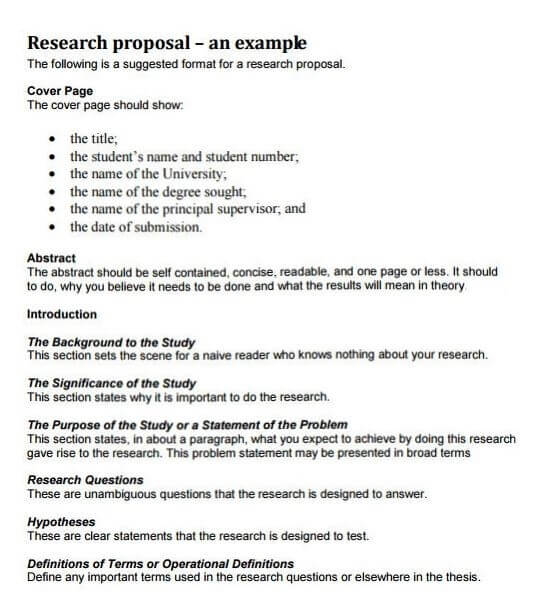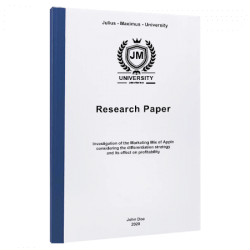This piece contains information about the research proposal sample, which is mostly the basics you need to know about the same. If you are a college student or a scholar, you can learn what needs to be included in your research proposal sample to make it more appealing and even win a sponsorship.

Definition of a Research Proposal Sample
Before going deeper into the key objective of this piece, let us take a look at the definition of a research proposal sample. First of all, a research proposal sample is a document that is created by college students and scholars to propose a research project. Most of the time, this document is used to request for sponsorship for the research mentioned. Usually, before sponsorship is issued, the possible impact of that research is evaluated by the administrators of the relevant field.
College and university students are usually asked to write research proposals towards the end of their courses. A research proposal sample speak volumes about the intended research activity. Sadly, most students find themselves struggling to create top-quality research proposals to earn them high grades. In this guide, you will find everything you need to know about research proposal samples and how you can create one.
numerous advantages for Canadian students:
- ✓ 3D live preview of your configuration
- ✓ Free express delivery for every order
- ✓ High-quality bindings with individual embossing

FAQs
The research proposal sample forms an integral part of your application, and there is a guide that you have to follow, regardless of what you intend to achieve with your research proposal sample. If you’d like some examples and more in-depth tips, head over to ‘Importance of Research Proposals in Academic Writing‘.
Tip: Your research proposal sample should be around 2,000 – 3,500 words in length (this translates to 3-5 pages).
These are handled the same way that you would handle any other research proposal sample. What is always looked at is the quality and relevance of your research proposal sample. If you’re running a bit low on motivation for writing your thesis, visit our blog article ‘The Guide to Writing a Good Thesis’. Regardless of the education level, you are focusing on; you need to keep your research proposal within the guidelines mentioned on this page.
Yes! Visit our blog article ‘Research Proposal Example‘ or alternatively, simply scroll down! However, when looking at examples, be sure not to copy their phrasing or ideas. Simply take a look at the structure and the ‘type’ of phrasing that is used.
First of all, you’ll need an eye-catching title. Then you’ll need the background information that is nescessary for the reader to understand what your proposal is about. Then you need the research methods, research questions, your hypothesis and many more details. If you’re having trouble getting started, you can find some tips about overcoming writer’s block simply by following the link.
First, make sure that you’ve carried out enough research. You would rather not get halfway through your research topic proposal and then realize that there’s not enough material for you to work with. Make sure that you clearly state the problem that you’re going to address with your research, and give any necessary background information that the reader may need. Your hypothesis also needs to be clear and consistent throughout. Once you’re finished, it’ll be time to submit your research proposal. Decide how you want to format it and then print it at home, or in a print shop.
Parts
Your proposal should include the following:
1. TITLE
Your title should give a clear indication of your proposed research approach or key question.
2. RESEARCH BACKGROUND
You should include:
- the issues and the background of your proposed research
- identify your discipline
- a short literature review
3. RESEARCH QUESTION(S)
Make sure to formulate these clearly, giving an explanation as to what problems and issues you explored and why they are worth exploring.
4. RESEARCH METHODS
Provide an outline of:
- the theoretical resources to be drawn on
- the research approaches
- the research methods appropriate for the proposed research
- a discussion of advantages as well as limits of approaches and methods
5. SIGNIFICANCE OF RESEARCH
The research proposal sample should demonstrate the originality of your intended research. Therefore, you should explain why your research is important.
6. BIBLIOGRAPHY
The research proposal sample should include a short bibliography identifying the most relevant works for your topic. You should include:
- a list of references to key articles and texts discussed within your research proposal sample
- a selection of sources appropriate to the proposed research
Bachelor/Master Thesis
How important is a Research Proposal Sample for academic writing?
A research proposal is a document often to fifteen pages that contains information on the proposed piece of research.
Benefits of Research Proposal Samples:
✓ It can save students a great deal of time in the long run.
✓ They are informative and persuasive and can be used to convince the reader to act.
✓ It can also be used to convince the reader that the issue at hand is impactful and that a solution is appropriate.
This is because the Research Proposal Sample contains things like:
✓ The proposed area of research
✓ The adequate amount of resources required for the project
✓ The most appropriate supervisor for the project
✓ It also displays the student’s ability to research and communicate professionally about the real issues impacting the community and environment.
Example
Here is a Research Proposal Sample:

In a nutshell
- A good research proposal sample is the backbone of the entire activity
- It must be kept as short and precise as possible
- It should be written in a plain language that can be understood by the readers
- The hypothesis helps to guide the study in the right direction
- Backup the claims with reliable sources, which are then listed as a bibliography at the bottom of the page
- Make sure that you take time to think about the issue at hand.
- Look for secondary sources of information and make sure that they are peer-reviewed. If you are not sure about anything, then there is no point mentioning it.
- After you have created a draught, go through it time and again and correct any errors that you might have made to achieve the required level of quality and originality.

